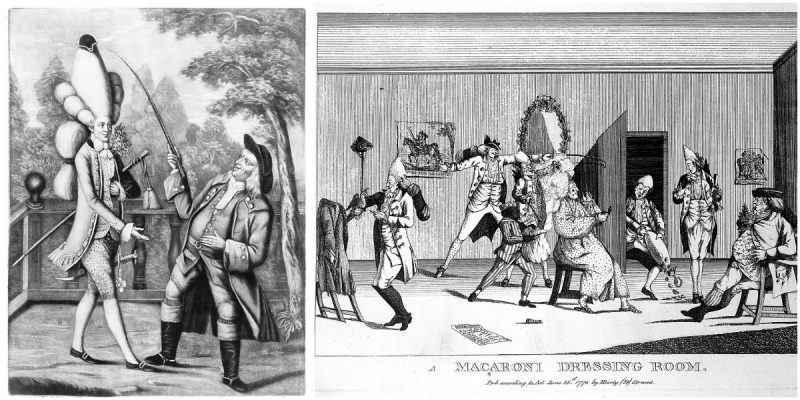There are few words with a more unexpected history than that of macaroni. In his book Delizia! The Epic History of Italians and Their Food (2007), John Dickie, a distinguished British historian and a professor of Italian studies at University College London, insisted that the word macaroni, and its previous version, maccheroni, originated from the word maccare, meaning to pound or crush.
However, in mid-18th-century England, there existed a macaroni that was neither a pasta nor a pounding but was, instead, a rather delicate and pompous being. This person spoke, but said nothing. Smiled, but not sincerely, nor pleasantly. When gathered with others of his ilk, he was a fairly fastidious person who ate meticulously, yet without a single sign of enjoyment. This human was seemingly neither male nor female but exceeded conventional boundaries in terms of fashion, clothing, culture, in fact, more or less everything.
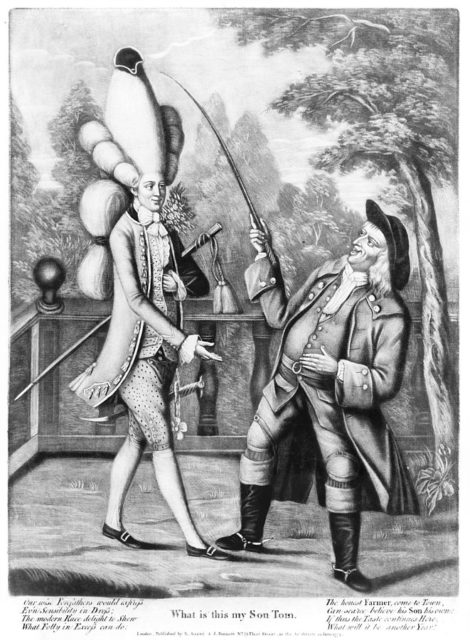
Yes, in the mid-18th century, “macaroni” was a term pejoratively used to describe someone who we might now refer to as a hipster.
Skinny men wearing tight pants, short coats, flashy shoes, striped socks, fancy canes, and last but not least, their trademark exaggerated wigs flooded the streets of England in the 1760s. The comical caricatures of that age, like the one above, portrayed people from the upper classes of England wearing giant wigs with funny looking miniature tricorn hats on top and thick pigtails attached from behind. Heavily powdered, the wigs often approached half the size of the macaronis themselves.
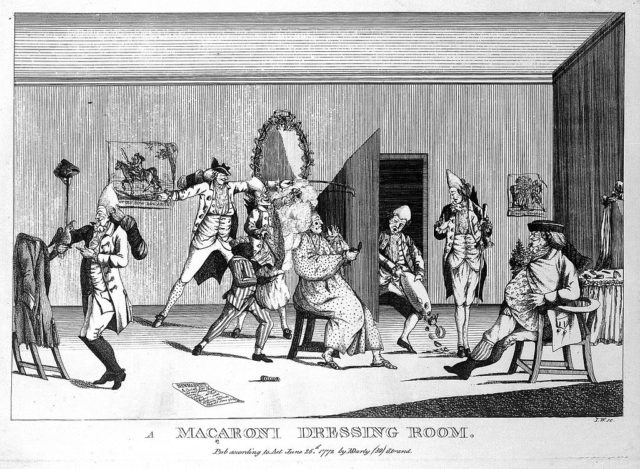
This foolish trend was started by young British aristocrats returning from the Grand Tour, which was a trip across Continental Europe taken by some with the intention of broadening their horizons and deepening their cultural knowledge. As a result, along with their homecoming, a weird looking and yet stylish sense of fashion gradually emerged in England, consisting of people with large wigs and slim clothing as well as a strong passion for the then-little-known Italian pasta from which they got their name.
These men, who had developed a taste for macaroni on their Grand Tour, used the word, until then reserved for the Italian dish, with a far broader significance. Anything fashionable or à la mode, they would call “very maccaroni.” At the start, to be “macaroni” was to be modern, sophisticated, a worldly citizen, and a class act.
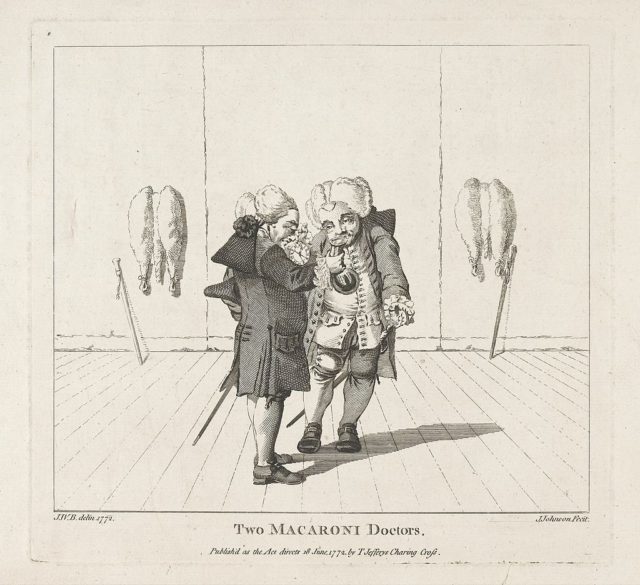
The trend inspired people to dress “loud” and to adopt various female-oriented clothing tendencies. It increased in popularity so much that eventually a style formed among wealthy young men that shared the frail keenness of women’s fashion of the period.
As soon as the fashion spread beyond its aristocratic roots in the 1770s, the macaroni style, although perceived as a bit feminine, was amplified many times over and very quickly lost its distinction and just as quickly fell out of favor. What was once a synonym for a refined Brit altered in meaning and became a word to describe a person “who exceeded the conventional bounds in terms of fashion.”
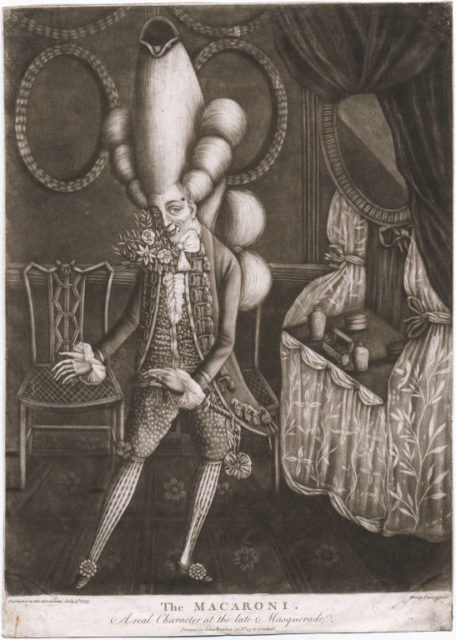
Almost overnight, the term “macaroni” was one of ridicule for men defined by their effeminacy, and entire industries sprung up in order to mock these macaroni men. In the early 1770s, Mary Darly, a professional cartoonist, dedicated her days to caricaturing macaronis. With time passing, her London store grew to be known as “the Macaroni Print Shop.” Her ridicule is now regarded as the first widespread use of caricature as a means of social criticism and such satire inspired many to do the same.
The common use of the word can be traced back to the biography of one of the most prominent English literary figures of the century, Samuel Johnson, written by Scottish biographer and diarist James Boswell. In it, by mentioning one of Boswell’s experiences with the English writer, he teases his odd ways, jokingly describing him as a Macaroni.
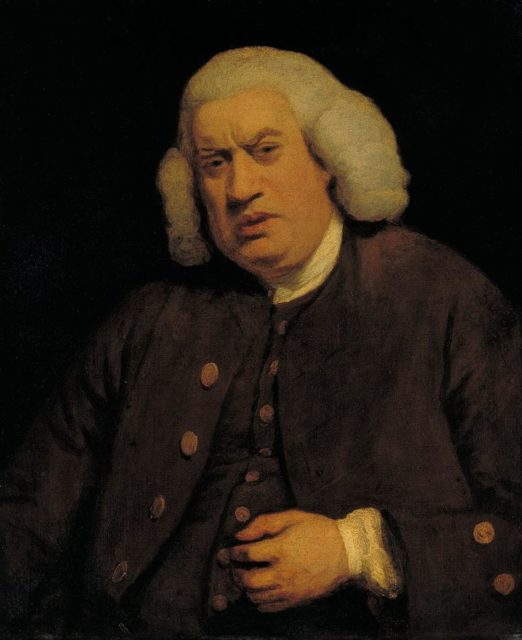
While on tour in Scotland with Dr. Samuel Johnson, Boswell noticed his friend was very uncomfortable in the saddle. So, in order to cheer him up, he called him a Macaroni, and a delicate Londoner, and as such, naturally, he wouldn’t know how to ride a horse.
Read another story from us: Fatal fashion: 15 deadliest fashion and beauty trends in history
In 18th century England, distinguished and noble young men, or men with such aspirations, tried to prove their worldliness and affirm their right to the luxury their status granted them. Instead, their fashionable egotistic dress only showed how much they were actually disconnected from the wider world and they became a laughing stock in the eyes of the “real” men, along with another trend that began soon after. This trend is alive to this day, at least in some of its forms, and is recognized as the highly sophisticated clothing style of the dandy.
